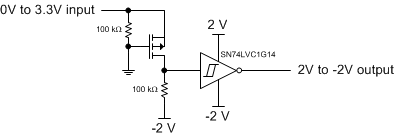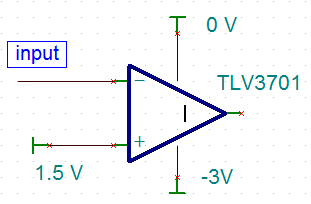Other Parts Discussed in Thread: TLV3701
Customer would like to use the device SN74LVC1G14 to invert to a negative voltage between 0V and N3V. Input voltage with a mosfet of 0V-P3V3, invert to a negative voltage between 0V and N3V.
And we found a previous post about that, as it said , this is possible. Now customer want to have some simulation and explanation on how this could work.




